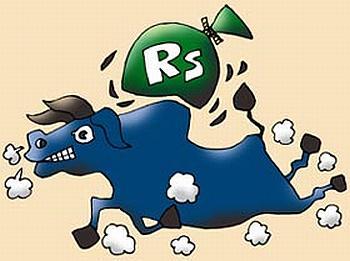 | « Back to article | Print this article |
13 myths that can make you poor
These might appear logical and consistent with common sense but they all suffer from fatal flaws, which can lead investors into losing money.
The complex nature of investment markets leads many to adopt simple rules of thumb when making investment decisions. Unfortunately, the forward-looking nature of investment markets means such approaches often cause investors to miss out on opportunities at best or lose money at worst.
Myth 1: Rising unemployment means growth can't recover
Whenever there is a downturn this argument pops up. But if it were true then economies would never recover from recessions or slowdowns. But they do.
Rather, the boost to household spending power from lower mortgage rates and any tax cuts or stimulus payments during recessions eventually offsets the fear of unemployment for those still employed.
As a result they start to spend more, which gets the economy going again.
In fact, it is normal for unemployment to keep rising during the initial phases of an economic recovery as businesses are slow to start employing again, fearing the recovery won't last.
Since share markets lead economic recoveries, the peak in unemployment usually comes after shares bottom.
The author is head of investment strategy at AMP Capital. He wrote this piece for Morningstar Australia where it initially appeared.
13 myths that can make you poor
Myth 2: Business won't invest when capacity utilisation is low
The problem is that it ignores the fact that capacity utilisation is low in a recession simply because spending is weak. So when demand turns up, profits rise and this drives higher business investment, which then drives up capacity utilisation.
Myth 3: Corporate CEOs, being close to the ground, should provide a good guide to where the economy is going
Senior business people are often overwhelmingly influenced by their own current sales but have no particular lead on the future.
This is not to say that CEO comments are of no value -- but they should be seen as telling us where we are rather than where we are going.
Myth 4: The economic cycle is suspended
A common mistake investors make at business cycle extremes is to assume the business cycle won't turn back the other way.
After several years of good times it is common to hear talk of "a new paradigm of prosperity".
Similarly, during bad times it is common to hear talk of a "new normal of continued tough times".
But history tells us the business cycle will remain alive and well. There are no such things as new eras, new paradigms or new normals.
13 myths that can make you poor
Myth 5: Crowd support indicates a sure thing
This "safety-in-numbers" concept has its origin in crowd psychology.
Individual investors often feel safest investing in a particular asset when their neighbours and friends are doing so and the positive message is reinforced via media commentary. But it's usually doomed to failure.
The reason is that if everyone is bullish and has bought into the asset there is no one left to buy in the face of more good news, but plenty of people who can sell if some bad news comes along.
Of course the opposite applies when everyone is bearish and has sold -- it only takes a bit of good news to turn the market up.
And as we have often seen at bear-market bottoms this can be quite rapid as investors have to close out short (or underweight) positions in shares. The trick for smart investors is to be sceptical of crowds.
Myth 6: Recent returns are a guide to the future
A classic mistake rooted in investor psychology. Reflecting difficulties in processing information and short memories, recent poor returns are assumed to continue and vice versa for strong returns.
The problem with this is that when its combined with the "safety-in-numbers" myth it results in investors getting into an investment at the wrong time (when it is peaking) and getting out of it at the wrong time (when it is bottoming).
13 myths that can make you poor
Myth 7: Strong economic/profit growth is good for stocks and vice versa
This is generally true over the long term and at various points in the economic cycle, but at cyclical extremes it is invariably very wrong.
The big problem is that share markets are forward-looking, so when economic data is really strong -- measured by strong economic growth, low unemployment, etc -- the market has already factored it in.
In fact, the share market may then fret about rising costs, rising inflation and rising short-term interest rates. As an example, when global share markets peaked in October/November 2007, global economic growth and profit indicators looked good.
Of course, the opposite occurs at market lows.
For example, at the bottom of the global financial crisis bear market in March 2009, economic indicators were very poor. Likewise, at the bottom of the mini-bear market in September 2011, economic indicators were poor and there was a fear of a "double dip" back into global recession.
But despite this "bad news", stocks turned up on both occasions with better economic and profit news only coming along later to confirm the rally.
History indicates time and again that the best gains in stocks are usually made when the economic news is poor and economic recovery is just beginning or not even evident, as stocks rebound from being undervalued and unloved.
13 myths that can make you poor
Myth 8: Strong demand for a particular product or stock-market sector should see stocks in the sector do well and vice versa
While this might work over the long term, it suffers from the same weakness as Myth 7.
By the time demand for a product (for example, new residential homes) is really strong it should already be factored into the share prices for related stocks (for example, building material and home building stocks) and thus they might even start to anticipate a downturn.
Myth 9: Countries with stronger economic growth will see stronger equity market returns
In principle this should be true as stronger economic growth should drive stronger revenue growth for companies and hence faster profit growth. It's the basic logic why emerging-market shares should outperform developed-market shares over time.
But it's not always the case for the simple reason that often companies in emerging countries may not be focussed on maximising profits but rather may be focussed on growing their market share or social objectives, such as strong employment under the influence of their government.
Myth 10: Budget deficits drive higher bond yields
It is common sense that if the government is borrowing more (higher budget deficits) then this should push up interest rates (the cost of debt) and vice versa, but it often doesn't turn out this way.
Periods of rising budget deficits are usually associated with recession or weak economic growth and hence weak private-sector borrowing, falling inflation and falling interest rates so that bond yields actually fall, not rise.
This was evident in both the US and Australia in the early 1990s recessions and evident through the global financial crisis, which saw rising budget deficits and yet falling bond yields.
13 myths that can make you poor
Myth 11: Having a well-diversified portfolio means that an investor can take on more risk
This mistake was clear through the global financial crisis. A common strategy had been to build up more diverse portfolios of investments with greater exposure to alternative assets such as hedge funds, commodities, direct property, credit, infrastructure and timber, which are supposedly lowly corelated to shares and to each other.
Yes, there is a case for such alternatives, but last decade this generally led to a reduced exposure to truly defensive asset classes like government bonds. So in effect, investors actually began taking on more risk helped by the "comfort" provided by greater diversification.
The financial crisis exposed the danger in allowing such an approach to drive an increased exposure to risky assets overall. Apart from government bonds and cash, virtually all assets felt the blowtorch of the crisis as supposedly low corelations among them disappeared.
Myth 12: Tax should be the key driver of investment decisions
For many, the motivation to reduce tax is a key investment driver. But there is no point negatively gearing into an investment to get a tax refund if it always makes a loss.
Myth 13: Experts can tell you where the market is going
I have to be careful with this one! But the reality is that no one has a perfect crystal ball. And sometimes they are badly flawed.
It is well known that when the consensuses of experts' forecasts for key economic or investment indicators are compared to actual outcomes they are often out by a wide margin.
Forecasts for economic and investment indicators are useful, but need to be treated with care.
And usually the grander the call -- for example, prognostications of "new eras of permanent prosperity" or calls for "great crashes ahead" -- the greater the need for scepticism as such strong calls are invariably wrong.
Like everyone, market forecasters suffer from numerous psychological biases and precise point forecasts are conditional upon information available when the forecast is made but need adjustment as new facts come to light. If forecasting the investment markets was so easy then everyone would be rich and would have stopped doing it.
The key value in investment experts' analysis and forecasts is to get a handle on all the issues surrounding an investment market and to understand what the consensus is.
Experts are also useful in placing current events in their historical context and this can provide valuable insights for investors in terms of the potential for the market going forward.
This is far more useful than simple forecasts as to where the stock market index will be in a year's time.






